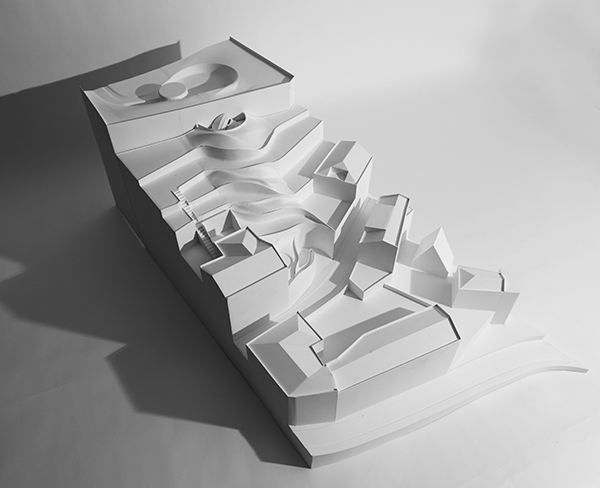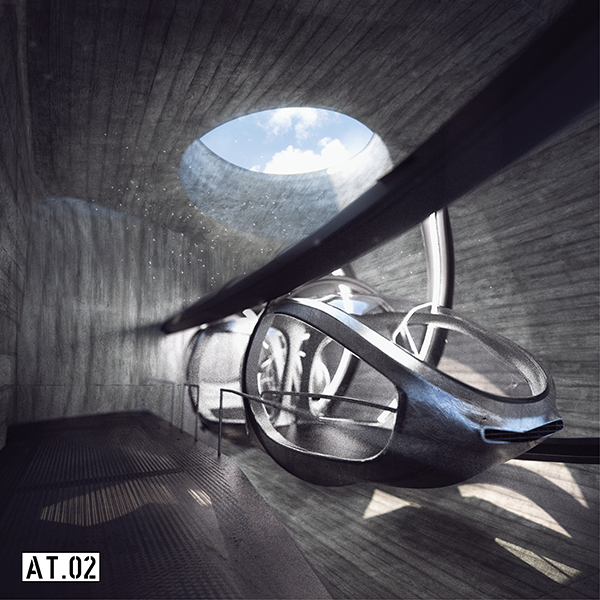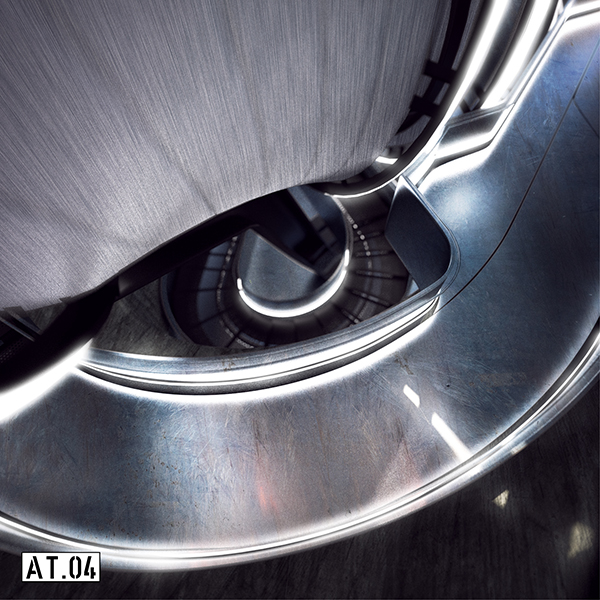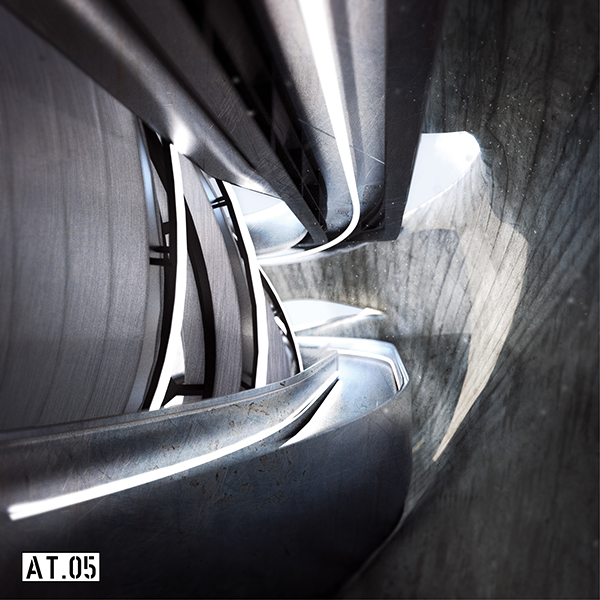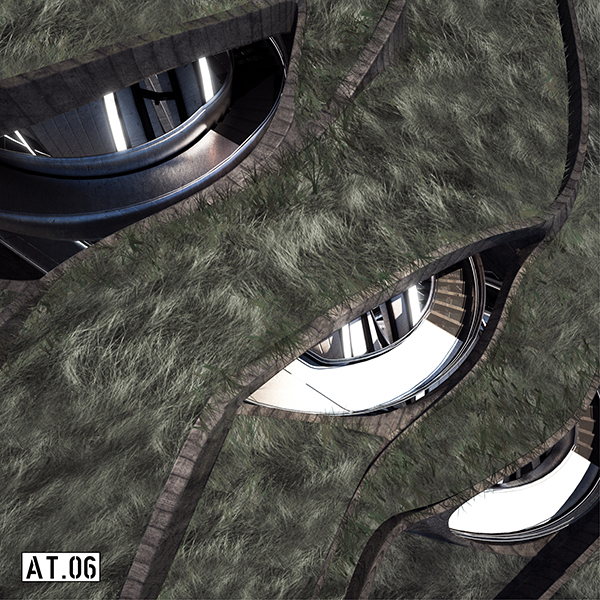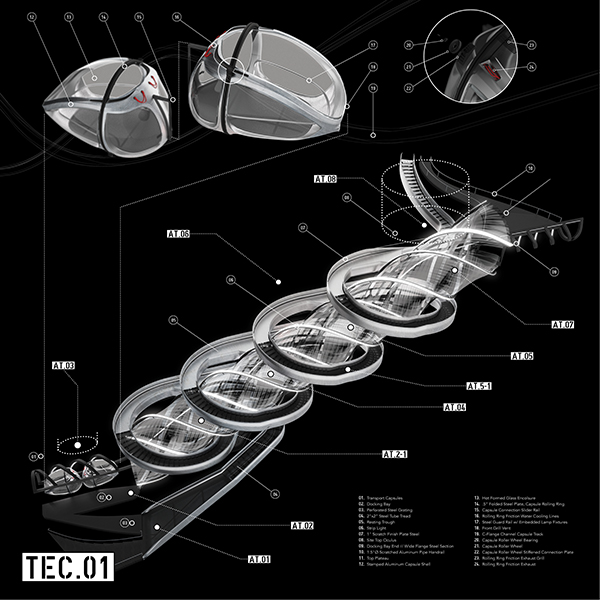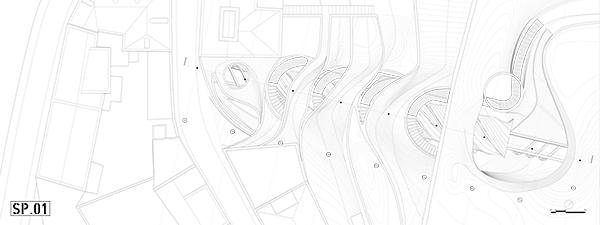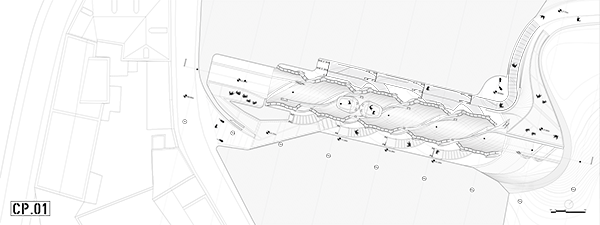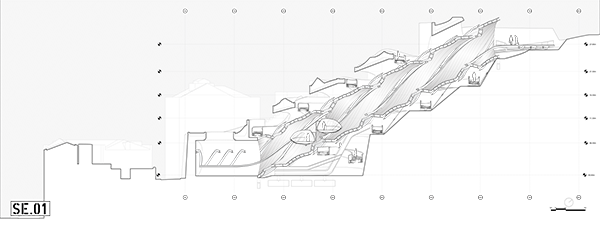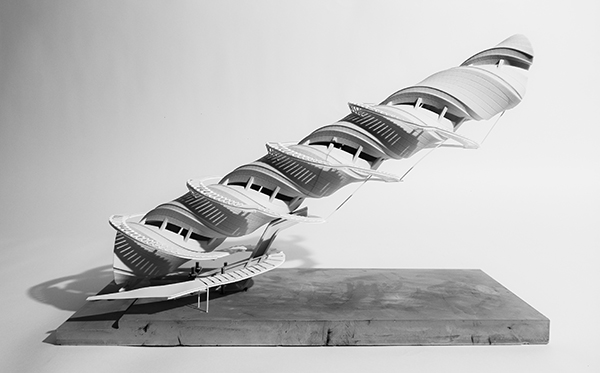The foundational core of this project designed by Zack Matthews at the Harvard GSD focuses on the effect which digital technology has had on tourism and its repercussions on physical attractions such as the Castle of St. Jorge – the historical castle located in Lisbon Portugal, where this project takes place.
Digital technology has not only provided distractions to disengage visitors of the castle, but it has also provided windows of accessibility where users can tour castles, museums, and collections from their own bedroom. As much of the allure of the programming and collections in the castle is a result of the atmosphere of the castle itself, the effect of the attraction is inevitably lost if only experienced through an iPhone, tablet, or laptop.
To address this problem and persuade people to actually experience the atmosphere of the historical pinnacle within Lisbon, this project begins to perform in two ways. It serves first as funicular – a novel and practical way to traverse the intense landscape of Lisbon as well as the approach to the castle.
Secondly, by using the inherent mechanical properties of the funicular – movement, velocity, and sound – perceptions of visitors using the alternate funicular wrapped stair, are stimulated and engaged. Additionally, both of these paths are located below ground in an immersive cavity which burrows from the street to the castle plateau above. By first engaging user perceptions and interactions between the two systems of travel, and then immersing those engagements underground, a more encompassing atmosphere is created which celebrates and heightens the event of traveling to the castle.
Ultimately by stimulating user perceptions and providing attraction to get to the castle, this project addresses the two identified problems of digital technology in tourism mentioned above. It perceptually, physically, and socially engages visitors enough to temporarily cure their digital distractions. It also creates an incentive to visit the castle and experience its physical qualities and qualitative atmospheres.

